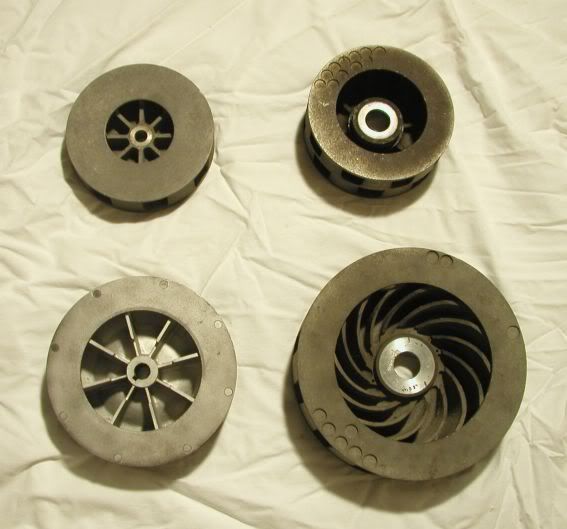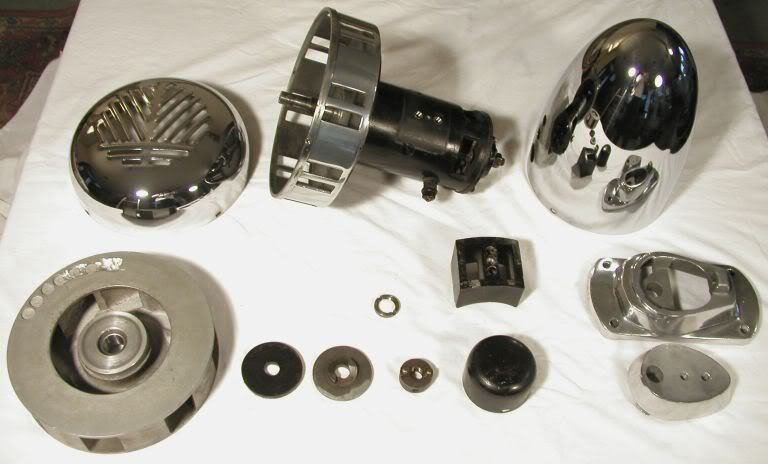Well, the clearance between the rotor and the stator is quite big, which could explain the lack of sound from the ports in relation to the front of the siren.
I believe that the sound is coming from the intake because the air that is getting sucked into the rotor pulsates in synchronization with the air being expelled out the rotor, to equalize the pressure, causing sound to form in the intake, and since the frequency of the air falling into the intake is the same as the frequency of bursts of air from the rotor, the sound from the intake is generally the same in pitch as the sound from the stator.
This is a little theory of mine I've had for a year or so.
- SirenMadness
- Registered User

- Posts: 3757
- Joined: Mon May 15, 2006 2:47 pm
- Location: Windsor, Ontario
- Contact: Website
- holler
- High Leg

- Posts: 5270
- Joined: Mon Jan 15, 2007 3:57 am
- Real Name: Jeb M
- YouTube Username: Blue10AEmia
- Location: Rhine, Georgia
- Contact: Website
Ok guys check this out, I have finished modifying my little grey siren and here is the finished product, installed in its own housing. I have uploaded test videos on the Audio/Video forum.

List of things I have done:
Removed those annoying finger guards
Cut the "daisy" design out of the top to allow more air flow
Painted the inside of the stator with a HEAVY coat of paint to reduce the rotor/stator clearance and increase output
Painted it Ace Hardware Safety Yellow and added the cover (I'll let you guys figure out what the cover is )[/img]
)[/img]

List of things I have done:
Removed those annoying finger guards
Cut the "daisy" design out of the top to allow more air flow
Painted the inside of the stator with a HEAVY coat of paint to reduce the rotor/stator clearance and increase output
Painted it Ace Hardware Safety Yellow and added the cover (I'll let you guys figure out what the cover is
Siren sales and service:
https://www.facebook.com/MccranieWarningSystems
https://www.facebook.com/MccranieWarningSystems
-
Adam Pollak
- Registered User

- Posts: 665
- Joined: Thu May 11, 2006 5:10 am
- Real Name: Adam Pollak
- YouTube Username: CrazySirenBoy
- Location: Loxahatchee, FL
- Contact: Website
- holler
- High Leg

- Posts: 5270
- Joined: Mon Jan 15, 2007 3:57 am
- Real Name: Jeb M
- YouTube Username: Blue10AEmia
- Location: Rhine, Georgia
- Contact: Website
YepAdam Pollak wrote:I'm gonna go with roof vent topper.
Siren sales and service:
https://www.facebook.com/MccranieWarningSystems
https://www.facebook.com/MccranieWarningSystems
- holler
- High Leg

- Posts: 5270
- Joined: Mon Jan 15, 2007 3:57 am
- Real Name: Jeb M
- YouTube Username: Blue10AEmia
- Location: Rhine, Georgia
- Contact: Website
The vent cover has changed the sound by deflecting any sound that is coming out of the top of the siren back towards the ground.
Siren sales and service:
https://www.facebook.com/MccranieWarningSystems
https://www.facebook.com/MccranieWarningSystems
-
stator-potater
- Posts: 8
- Joined: Tue Feb 19, 2008 4:47 am
I'm going to say that the space between rotor and stator helps explain why the sound output is attenuated when air if blown into the intake. The hypothesis goes like this: the forced air is getting into the annular space between the rotor and stator and interfering with air chopping.
This is an experiment that may help prove or disprove the hypothesis: blow air into the intake through a small diameter hose pointed right in the center of the intake, to avoid air getting into the rotor/stator space as much as possible. If the sound improves compared with nothing and using a shop-vac still hurts output, that might be the answer.
This is an experiment that may help prove or disprove the hypothesis: blow air into the intake through a small diameter hose pointed right in the center of the intake, to avoid air getting into the rotor/stator space as much as possible. If the sound improves compared with nothing and using a shop-vac still hurts output, that might be the answer.
Return to “Other Warning Systems - Indoor, Outdoor and Vehicular”
Who is online
Users browsing this forum: Ahrefs [Bot] and 63 guests

